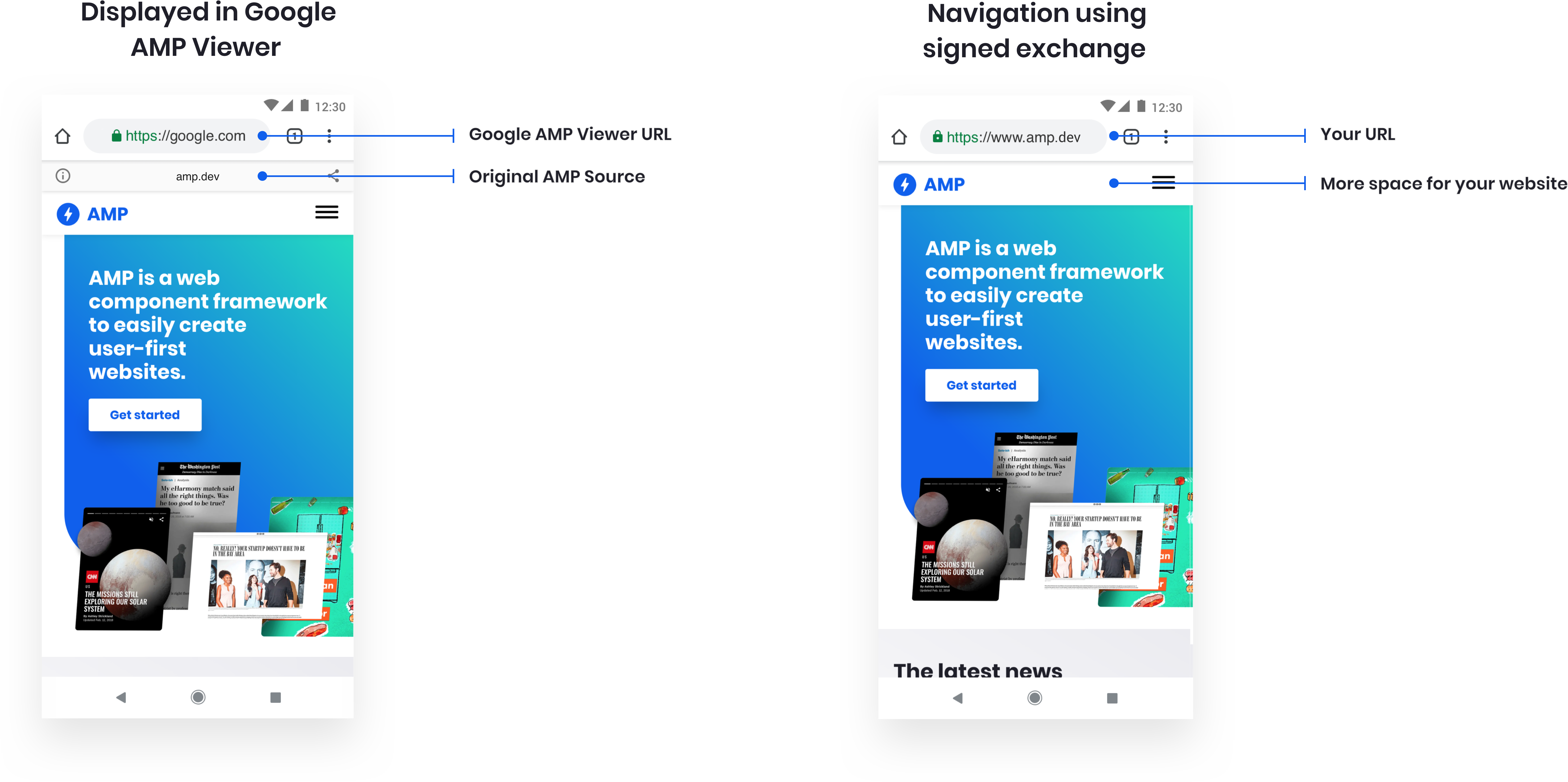Understand how AMP works in search results
Google Search indexes AMP pages to provide a fast, reliable web experience. When an AMP page is available, it can be featured on mobile search as part of rich results and carousels. While AMP itself isn't a ranking factor, speed is a ranking factor for Google Search. Google Search applies the same standard to all pages, regardless of the technology used to build the page. For more information on the benefits of using AMP, see the AMP Project success stories.
When users select an AMP page, Google Search retrieves the page from the Google AMP Cache, enabling a variety of load optimizations that often make these pages appear instantly, such as prerendering. Currently, AMP pages on desktop aren't served from the Google AMP Cache/AMP Viewer. Canonical AMP Pages behave like standard results.
Initial display in Search results
AMP pages can appear in Google Search as a rich result, just like other pages on the web. To help Google better understand your page, you can add structured data to your page. It's important to note that Google doesn't guarantee that adding structured data will enable a rich result in Search results. For more information, refer to the Structured Data General Guidelines.
If you have duplicate pages for the same content, place the same structured data on all page duplicates, not just on the canonical page. For more information on placement, see the Structured Data General Guidelines.
AMP pages can also appear as Web Stories. Learn more about how to enable Web Stories on Google Search.
After users click AMP content
When users click your AMP content in Google Search, AMP content may be shown in one of two ways:
- Google AMP Viewer: At the top of the Google AMP Viewer, the domain of your content is displayed so that users understand who published it.
- Signed exchange: A technology that allows the browser to treat a document as belonging to your Origin.

About the Google AMP Viewer
The Google AMP Viewer is a hybrid environment where you can collect data about the user in browsers that support the Google AMP Viewer. The Google AMP Viewer may render when our systems determine it can provide a helpful user experience, especially in situations where swiping through content is expected. Data collection by Google is governed by Google's privacy policy. As an AMP page publisher whose content is displayed in the Google AMP Viewer, your data collection is governed by your privacy policy. Because you choose the behaviors and vendor integrations in your AMP page, you are responsible for fulfilling the compliance obligations that result from those choices.
About signed exchange
A signed exchange allows you to use first party cookies to customize content and measure
analytics. Your page appears under your URL instead of the google.com/amp URL.
Google Search prioritizes linking to content as signed exchange over using the Google AMP
Viewer in browsers that support signed exchange. To provide users with results in this format,
you must publish AMP content as a signed exchange in addition to the regular AMP HTML format.
Currently, signed exchange is only supported in Google Search for rich results and basic
results, not carousels. To learn more about setting up signed exchange for AMP pages, visit
Serve AMP using Signed Exchanges.
